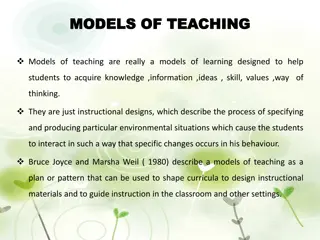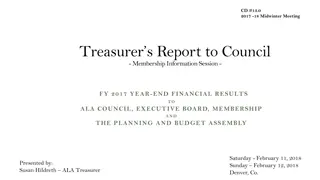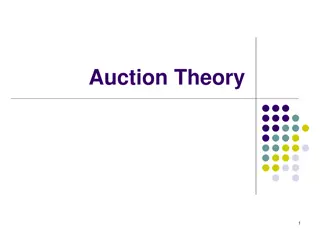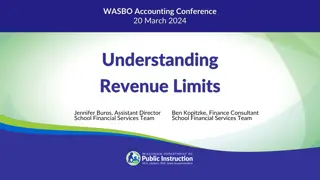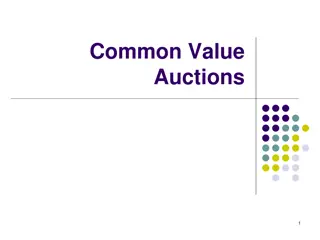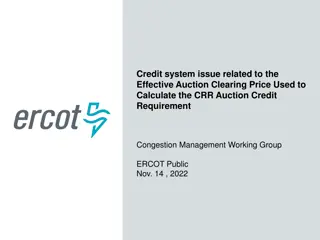Different Types of Auctions and Revenue Models
Explore the world of auctions, from English to Dutch auctions, and the concepts of valuations, revenue versus efficiency models, and bidding strategies like sniping. Learn about reserve prices, entry fees, and the impact of independent private values on auction outcomes. Discover how eBay bidding works and delve into an interesting paper on loyalty points as currency alternatives.
Download Presentation

Please find below an Image/Link to download the presentation.
The content on the website is provided AS IS for your information and personal use only. It may not be sold, licensed, or shared on other websites without obtaining consent from the author.If you encounter any issues during the download, it is possible that the publisher has removed the file from their server.
You are allowed to download the files provided on this website for personal or commercial use, subject to the condition that they are used lawfully. All files are the property of their respective owners.
The content on the website is provided AS IS for your information and personal use only. It may not be sold, licensed, or shared on other websites without obtaining consent from the author.
E N D
Presentation Transcript
Types Of Auction English Auction calling Out lower Price and raising it, auction stops when there is only one interested bidder. Dutch Auction - begins by calling out a price high enough , price is gradually lowered until some bidder indicates interest. Sealed-bid First Price - Bidders submit bids in sealed envelopes, the person submitting the highest bid wins the object and pays what he bid Sealed-bid Second Price - Person submitting the highest bid wins the object but pays not what he bid but the second-highest bid.
Valuations Private Values ex: consumption good (paintings) Interdependent Values ex: assets Common Values ex: bidding, is the same for all bidders
REVENUE VERSUS EFFICIENCY THE SYMMETRIC MODEL : single object for sale, N potential buyers are bidding for the object. Bidder i assigns a value of Xi to the object the maximum amount a bidder is willing t pay willing to pay for the object. Each Xi is independently and identically distributed on some interval [0, ] according to the increasing distribution function F. each bidder is both willing and able to pay up to his or her value.
With independently and identically distributed private values, the expected revenue in a first-price auction is the same as the expected revenue in a second-price auction. reserve price : ENTRY FEES: A reserve price (or equivalently, an entry fee) raises the revenue to the seller but may have a detrimental effect on efficiency
Bidding On Ebay: You are first to bid on one auction with a $14.99 start price. You want to pay no more than $30, so place a bid for $30. You now lead the auction with a bid of $14.99 showing. Your bid will only increase if someone else places a bid. Unless you change your mind, you won't need to bid again. Reserve Price: A reserve price allows you to set a low starting price to generate interest and bidding, but protects you from having to sell your item at a price that you feel is too low. Sniping : bidding in the last few seconds of an auction so that it ends before another bidder gets a chance to outbid you. The idea is that this will get you a lower price
Another Interesting Paper Reference: http://drum.lib.umd.edu/bitstream/handle/1903/1518/umi- umd-1500.pdf?sequence=1&isAllowed=y Use of loyalty Points instead of actual money Two rounds : Primary and secondary Primary: organization (seller) , students (buyer) Secondary: students sell and buy.




